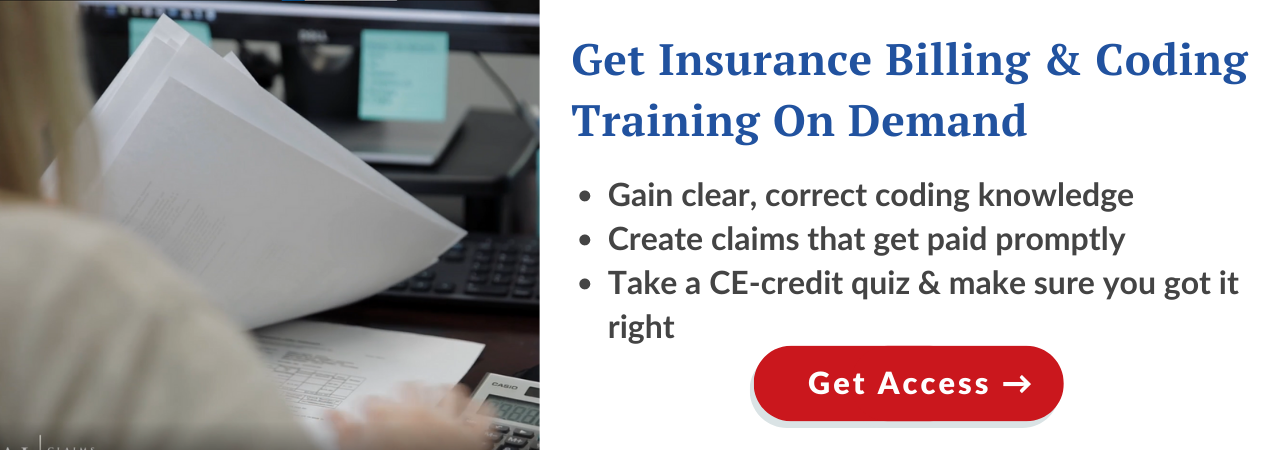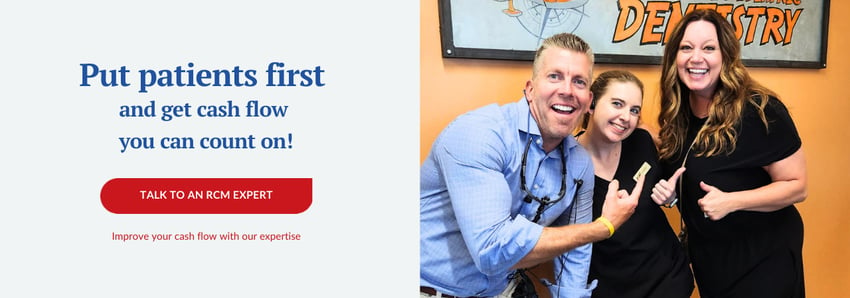Using a dental clinical notes template: Pros and cons


When working with dental patients, clinical notes are crucial, and using a clinical notes template helps alleviate the pressure to write everything down. It seems like a no-brainer to use a clinical notes template. It sounds efficient and helpful - but doing so may lead to a few problems if they are not set up properly in your software.
Missing information from clinical notes that you attach to your dental insurance claims can lead to denials. Insurance claim denials then lead to extra claims work for your team and delays in payment from insurance. This is valuable income that you deserve to be collecting.
Dental ClaimSupport has been working with dental teams for over 10 years to submit clean, accurate insurance claims. Through this work, we have seen how dental clinical notes templates can help, but also hinder teams from getting proper reimbursement. Sounds contradictory, right?
In this article, we’ll clear up that confusion. You’ll learn how when used as more of a checklist, dental clinical notes templates can be a great resource for dental professionals. You’ll also learn how when depended on, clinical notes templates don’t always cover everything you need for completed notes to attach to your claim.
Pros to using dental clinical notes templates
Who doesn’t love good, clear, step-by-step instructions? It makes your task at hand feel fool-proof. And that’s why dental clinical notes templates are popular among dental professionals.
Clinical notes templates act as a good checklist
Clinical notes cover so many things such as the patient’s personal information, their medical history, their missed appointments, unscheduled treatment, and any prescriptions or medications the patient is on. It’s a lot to cover. So it makes sense that having a template adds the comfort of knowing you’ve covered everything.
When the clinical notes template is used more as a checklist and/or guidelines, it can be a great tool for dental teams when completing their notes.
Clinical notes templates can be helpful for training
If you’re hiring someone green in the realm of dentistry and dental billing, clinical notes templates can be a great resource. It can help your new employee learn what clinical notes are supposed to look like and what information to include.
The templates also help your new employee with proper clinical notes formatting, minimizing spelling and grammatical errors as well.
Clinical notes templates can help with efficiency
When there’s a template, the assumption is that you just have to fill in the blanks or click on the multiple choices from a pull down list.
This means you can record and document your notes quickly and efficiently. Templates can help to create smooth workflows and easy data input. With this process moving more quickly, you and your team can have time to work on other tasks related to the billing process or patient care.
Cons to dental clinical notes templates
These cons aren’t meant to drive you totally away from using clinical notes templates. They’re meant to help you be vigilant and pay attention to details that can be missed if you’re going through the motions, filling in blanks of a template.
Clinical notes templates may need to be modified when you begin a new clinical technique, or use new products and new materials
Unfortunately, there is no “one size fits all” when it comes to clinical notes templates.
Each template will also need to be adjusted and reformatted depending on the patient’s information and history. If you’re not adjusting each template, you might not be including the right (or enough) information about the patient. It may take a few months to get it updated to your liking.
Pharmaceutical companies are constantly adding new medications, it is vital to update the medication options on the template and in your medication list. Failure to enter the updated medications your patient is taking may result in a healthcare crisis and potential lawsuit.
-1.jpg?width=695&name=DSC02234%20(2)-1.jpg)
Many blood pressure and anti-epilepsy medications, for example, increase your patients' risk factor of developing periodontal disease. This information is vital for your periodontal evaluation.
So make sure you’re tailoring clinical notes for each patient individually and allow a “free space” to type any extra details, not in your pull-down checklist. If you find that you are typing the same thing over and over, then just edit your template to include the information needed.
Be sure the provider reviews and signs the clinical notes with a digital pen, touch screen, or mouse.
Pro Tip: Most practice management software programs have a way to track incomplete, missing, or unsigned clinical notes! Ask your software support if you do not know how the tracking works.
It’s highly likely that you will paste incorrect information when dependent on a clinical notes template
When using templates, it’s tempting to copy and paste your most recently used clinical notes template for your new one. When this is the case, there is a higher chance that you could paste information from a previous patient. You must then edit your notes, and you may forget that it needs to be replaced with your current patient’s information.
This method doesn’t use prompts that require a selection of answers and you may have incorrect information.
We do not recommend a cut and paste.
Training your team on how to properly set up the templates, prompts and answer/options and how to use the templates requires time and patience. Be sure to add the prompts for options to customize your clinical notes for the patient. Each provider may develop their own templates and most software programs also allow you to use a group note.
Of course, we’re not saying don’t copy and paste, but if you’re doing this - you have to be hyper-aware of replacing each section of information with the current patient’s. It is not efficient and there’s simply more of a risk of errors that could cost you.
You could leave off information when using a clinical notes template
As we mentioned, templates should be referred to more so as a checklist - not a replica of everything you should be including in your notes.
It’s possible that whatever template you’re using does not have space for other information you’d need to include (depending on the patient). You may want to consider adding “free space” for free text for typing additional notes.
For accurate claim submission, we always recommend offices over-explain as much as possible so that there is less of a reason for insurance companies to deny. And if you’re leaving off some information because the template you’re using doesn’t call for it - you might face denials.
Taking time to train your staff will help you avoid costly errors. Consider taking our Dental Claims Academy Course on “Pitfalls in Clinical Documentation & Recordkeeping” and look at other AGD/PACE CE courses you may want to take.
Ready to include your attachments to dental insurance claims accurately?
Filling out your clinical notes can feel tedious, but it’s crucial for accurate claim submission. And having that documentation can be useful if any questions or legal concerns arise.
Templates can be a useful tool if they are updated and able to be edited for each patient’s visit. And now you understand what you need to pay attention to if you plan to utilize dental clinical notes templates.
Dental ClaimSupport has helped dental teams submit and appeal insurance claims so that you collect the insurance income you’ve earned. We have seen how proper and thorough documentation can make a huge difference in claim approval. To learn more about how important documentation and attachments are for accurate claim submission, visit our Learning Center.
Related Posts
Dental revenue resources from Dental Cashflow Solutions (formerly Dental Claim Support)


